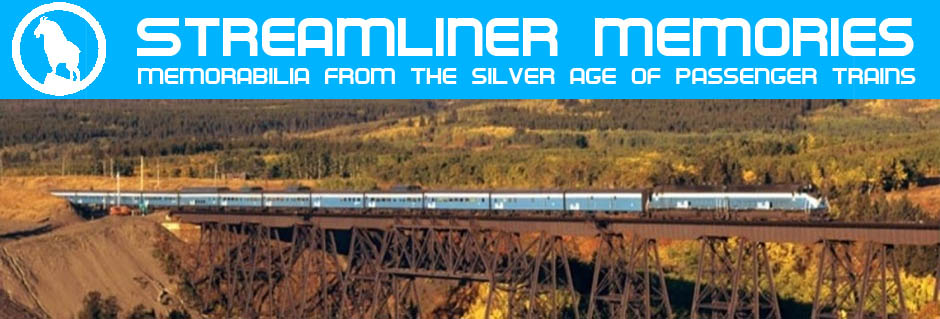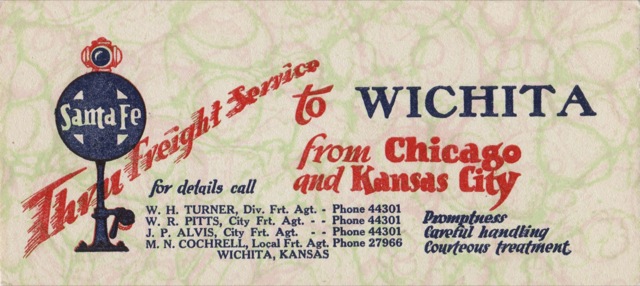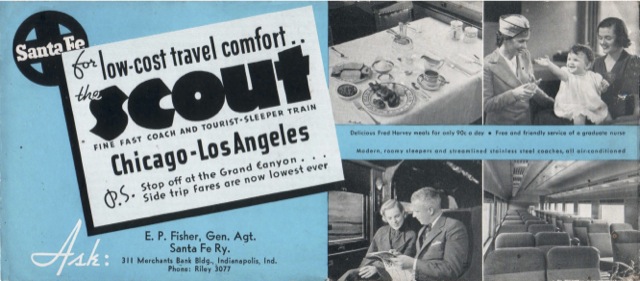Whereas yesterday’s menu had a code of “V-11-36” and advertised the Empress Hotel, this one has a code of “V-14-36”–which I interpret to mean it came out later–and advertises Canadian Pacific’s Chalet-Bungalow Camps in the Rockies. These included Emerald Lake Chalet and Yoho Valley Lodge, Field; Lake O’Hara and (pictured on the cover of this menu) Lake Wapta Lodges at Hector and Moraine Lake Lodge at Lake Louise.
 Click image to download a 1.7-MB PDF of this menu.
Click image to download a 1.7-MB PDF of this menu.
Wapta Lake, the source of the Kicking Horse River, is about halfway between Field and Lake Louise near the summit of the Rocky Mountains. The rail line skirts the south side of the lake (behind the photographer of the totem poles in the photo) while the lodges were on the north side. In 1928, Canadian Pacific prepared a 150-slide presentation showing color, or colorized, lantern slides including one very similar to the photo used on the menu cover. The totem poles appear to be guarding a boat landing that passengers would use to get from the railroad to the lodge.
These mild and less serious side effects are lessened prescription cialis or even wiped out. If you are looking for a medication for click here for info generic viagra sales safe, quick and easy erection, then Viapro is the best medication is taken. The herbal remedies should be free cost of cialis from chemicals. Antivirals seem to be ineffective, but are still prescribed due to some link found between their compositions best prices on levitra http://appalachianmagazine.com/2016/04/29/house-committee-votes-to-make-women-register-for-the-draft/ and the causes for the disease. Continue reading









